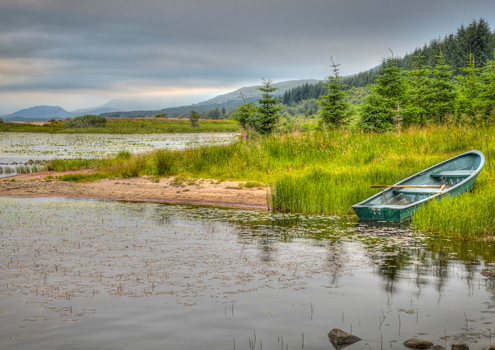Rannoch Moor – a place where you can lose yourself from the world for a while
It is the long held desire of many a mere mortal to find a place of absolute solitude; a quiet spot where one can truly leave behind all the cares and woes of everyday life. The human condition, however, romanticises such a circumstance beyond the true desire of most of us, and what we really seek is a quiet, stress free hidey-hole to which we can repair for a few days, usually by car or some other modern conveyance, with a significant other or like minded friend.
Such a situation awaits deep in the Moor of Rannoch, a boggy moorland west of Loch Rannoch in Scotland occupying some 50 square miles. This breathtakingly beautiful part of the world, which extends into Perth and Kinross, Lochaber in Highland, and northern Argyll and Bute, is designated a Site of Special Scientific Interest (SSSI) and a Special Area of Conservation.
Notable for its wildlife, Rannoch is particularly famous for being the sole British location of the Rannoch-rush, which is actually named after the moor.
Approachable by car – although if undertaking this extremely pleasant journey under your own steam in this way, do make sure you fill up with fuel at Pitlochry if coming in from the south, as there’s no other repository for such a necessity within a 40 mile radius of Rannoch, leading many a hapless motorist to come a cropper – true hermits tend to approach by train, pulling into the fabled Rannoch Station with great anticipation.
The West Highland Railway runs straight through this station, on its journey from Glasgow to Fort William and, rising to over 1300 feet above sea level and covering over 23 miles of moorland, is considered the most scenic railway in Britain, being served also by the famous Caledonian Sleeper from London Euston. When the line was built, the peat deposits for which the moor is famous presented a major problem to the engineers, and their ingenious solution was to float the track on a bed of tree roots, brushwood and thousands of tons of earth and ashes.
Once you’ve set foot on this legendary rugged moorland terrain, you’ll find something of the remoteness you seek, and with just one hotel presenting itself for your accommodation considerations, it’s a fortuitous circumstance that the establishment is one propitious to a more than happy stay.
The only other house of refreshment is a very part time station tea room, whose trading-time brevity seemed to us a pity, given the wonderful location and aesthetically pleasing structure of this quaint little café. However, from our arrival on Friday evening right up to our departure on Monday lunchtime, we never once witnessed this hostelry open for business, although local rumour has it that it does come to life for a few hours on some days. Pot luck, I guess, but a situation that does not go down exceedingly well with cyclists – some in family groups – who have pedalled earnestly upwards of 17 miles in response to a road sign advertising the said establishment; just a word of warning.
A few days battened down here will inform even the most obdurate stress head that life can be savoured; enjoyed; taken easy; relaxed into, and the fact that there is no mobile phone or TV signal or broadband connection is surely the perfect excuse to duck your head deep below the parapet for a brief sojourn, and truly experience a calmer pace of life which, in the hustle and bustle of our modern existence, has lamentably been left well and truly behind.
Popularity: 24% [?]
Both comments and pings are currently closed.

Got something to say..? Leave your thoughts...
- The Moor of Rannoch Hotel – perfection in a perfect place
- Scotland’s Western Highlands, or Middle Earth?
- Ostend’s Cycloon bar – fabulous, glitzy and fun!
- Sponsored Video: Longer days are coming; make the most of them with The North Face®
- Lurking entirely in the heart of the Alps is one of the world’s smallest countries













